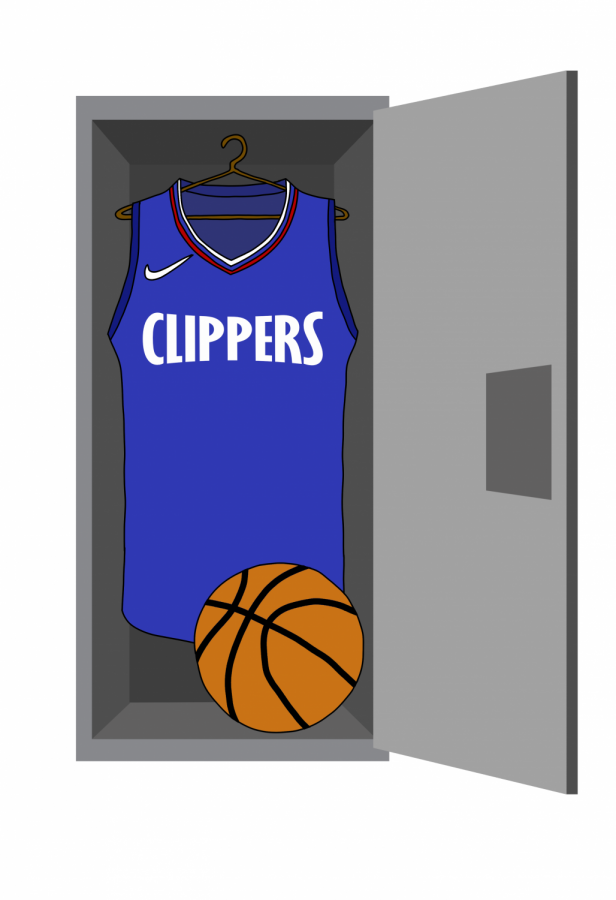Beyond the Bison: NBA load management
November 14, 2019
The 82-game NBA regular season takes a physical toll on players’ bodies. In response, teams and coaches are choosing to sporadically bench their high-profile players in what has become known as “load management.” While the league grapples with deciding whether this procedure falls within the bounds of rules and regulations, NBA fans have taken to complaining.
Load management is often a pre-made decision to rest a high-profile player, usually during one game of a back-to-back set. Load management is by no means a new occurrence. In 2012, San Antonio Spurs’ head coach Gregg Popovich benched star player Tim Duncan, noting this as “DNP” on the roster and joking with reporters that Duncan was “old.” Back then, fans had a good laugh at Popovich’s comedic comment, but the concept was not one-and-done. It is now a trend that is catching on in the league and that last year correlated with success. The Toronto Raptors, the defending NBA champions, had only three players that played in more than 70 games last season.
A Nov. 6 matchup between the Los Angeles Clippers and the Milwaukee Bucks thrust the issue back into the mainstream media this season. The nationally televised game was widely advertised as a meeting of two of the league’s marquee players: LA’s Kawhi Leonard (2019 NBA Finals MVP) and Milwaukee’s Giannis Antetokounmpo (2019 League MVP). However, the Clippers made the decision to sit Leonard, which the league deemed acceptable due to an ongoing knee injury. But when Clippers head coach Doc Rivers mentioned to reporters that Leonard “feels great” and that the team had “no concern,” the team was fined $50,000 for making statements that were “inconsistent with Leonard’s health status.”
Needless to say, fans who bought tickets to the Clippers vs. Bucks game that night were frustrated that they didn’t get to see the superstar matchup they expected — and paid for. The disgruntled fans have a point. Players and coaches, in return, can do a better job of explaining what load management means and how it is intended to actually improve their teams’ playoff prospects.
Fans and analysts alike judge the caliber and legacy of a player by how many championships he has. Accordingly, some sports journalists argue that the NBA regular season has taken on less meaning, and the postseason has taken on more importance. So, strategically, it makes some sense to milk the injuries of superstar players during the regular season: you play them enough to guarantee a spot in the playoffs, and then you make sure they’re healthy enough once the postseason rolls around to bring your team a championship.
Amid contentious discussion, the league is still coming to terms with where load management fits within their policy. On Nov. 11, NBA president of league operations Byron Spruell sent a memo to teams stating that “load management is not an injury or an appropriate description of an injury under the Injury Reporting Procedures.” No doubt, though, teams will find a way around the rules to give their star players the rest that they — quite honestly — need and probably deserve.
NBA great LeBron James is not a fan of the trend. “If I’m hurt, I don’t play. If not, I’m playing,” James said, noting that this has always been his motto. However, James has contended that part of the problem is that travel basketball leagues like the AAU push young players too hard. As a result, they enter the league already having significant wear and tear on their bodies. These comments are consistent with the growing concern in the athletics sphere that young athletes are being pushed too hard in player development. The story of Mary Cain — a runner in Nike’s Oregon Project who was pushed by her coaches to lose more and more weight until it put other aspects of her health at severe risk — made headlines this week highlighting just that problem. Leagues and training facilities for aspiring professional athletes need to be conscious of not taking advantage of youth, which can cause physical damage to their bodies.
But this care and caution should not stop when it comes to adult professional athletes, either. With an average of 3.5 games and many miles traveled per week, NBA players deserve to be able to manage the intense strain that being a professional athlete puts on their bodies. Sure, that’s what they are paid for, but stars who take good care of their bodies are bound to stay in the league longer, which is better for fans in the long run.





















